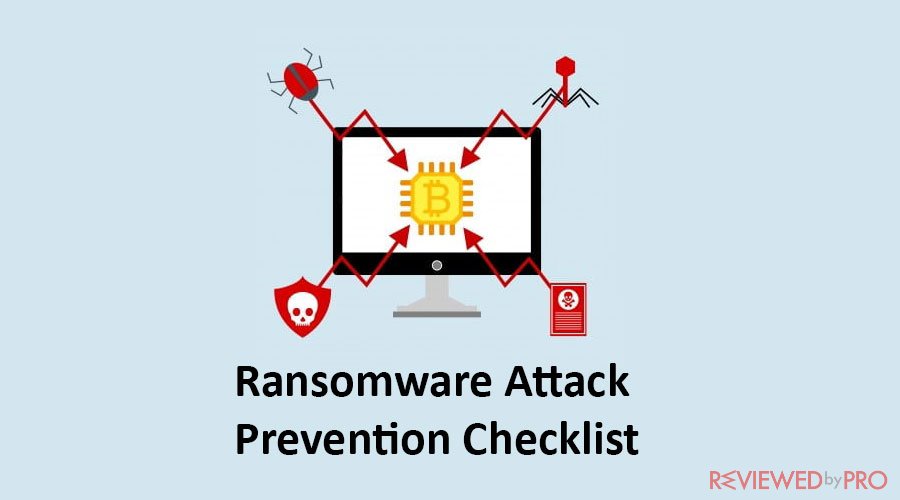
Ransomware is a type of malicious software (malware) that encrypts files or locks a user out of their computer or device, rendering it inaccessible until a ransom is paid. It is a form of cyber extortion where attackers demand payment, usually in cryptocurrency, in exchange for restoring access to the encrypted data or unlocking the affected system.
Ransomware typically spreads through various vectors, including malicious email attachments, infected websites, or by exploiting vulnerabilities in software or operating systems. Once the ransomware gains access to a system, it starts encrypting files, making them unreadable and unusable without the decryption key held by the attackers.
After files are encrypted, the ransomware displays a message, often referred to as a ransom note, notifying the victim about the attack and providing instructions on how to pay the ransom. The ransom note usually includes details on the payment amount, payment method, and a deadline by which the payment must be made. Attackers may also threaten to permanently delete or leak the encrypted files if the ransom is not paid within the specified time.
It's important to note that paying the ransom does not guarantee that access to the files or system will be restored, and it can potentially encourage further attacks. Therefore, it is generally advised not to negotiate with or pay the attackers.
Preventing ransomware attacks involves implementing robust security measures, such as regularly backing up data, keeping software up to date, using reliable security software, being cautious of suspicious emails and attachments, and practicing good cybersecurity hygiene. Education and awareness about ransomware threats are also crucial in detecting and avoiding such attacks.
Best ways to prevent ransomware attacks
Preventing ransomware attacks is crucial for safeguarding your data and protecting yourself or your organization from potential harm. Here's a comprehensive checklist of preventive measures you can take:
-
Backup Your Data: Regularly back up all your important files and data to an offline or cloud-based backup solution. Ensure that your backups are stored securely and can be easily accessed if needed.
-
Keep Software Up to Date: Regularly update your operating system, applications, and security software. Enable automatic updates whenever possible to ensure you have the latest security patches and bug fixes.
-
Use Reliable Security Software: Install reputable antivirus and anti-malware software on all your devices. Keep the software up to date and perform regular scans to detect and remove any malicious files.
-
Be Wary of Email Attachments and Links: Exercise caution when opening email attachments or clicking on links, especially if they come from unknown or suspicious sources. Be particularly vigilant with email attachments that prompt you to enable macros.
-
Enable Spam Filters: Enable spam filters on your email accounts to block or redirect potentially malicious emails. This can help prevent phishing emails that often carry ransomware payloads.
-
Use Strong, Unique Passwords: Create strong, complex passwords for all your accounts, and avoid reusing passwords across different platforms. Consider using a reliable password manager to generate and store your passwords securely.
-
Implement Multi-Factor Authentication (MFA): Enable MFA whenever possible, especially for critical accounts and sensitive systems. This adds an extra layer of security by requiring additional verification beyond just a password.
-
Keep Remote Desktop Protocol (RDP) Secure: If using RDP, ensure that strong passwords are in place and limit access to authorized users only. Consider using VPNs and firewall rules to enhance the security of remote connections.
-
Educate and Train Users: Provide comprehensive cybersecurity awareness training to employees or individuals who use the systems. Teach them how to identify phishing attempts, suspicious links, and email attachments. Encourage a security-conscious mindset.
-
Regularly Test and Update Incident Response Plans: Develop and maintain a robust incident response plan that includes steps to address a potential ransomware attack. Regularly test and update the plan to ensure it is effective and aligns with the evolving threat landscape.
-
Segment Your Network: Implement network segmentation to isolate critical systems and sensitive data. This can help prevent the lateral spread of ransomware within your network.
-
Monitor and Analyze Network Traffic: Use network monitoring tools to detect and analyze suspicious activities or anomalies that may indicate a ransomware attack in progress. Promptly investigate and respond to any identified threats.
-
Limit User Privileges: Enforce the principle of least privilege (PoLP) by granting users only the necessary access rights and privileges required to perform their roles. Restrict administrative privileges to reduce the potential impact of a successful ransomware attack.
-
Develop a Cybersecurity Culture: Foster a culture of cybersecurity awareness and responsibility within your organization or among individuals. Encourage reporting of suspicious activities and incidents promptly.
-
Stay Informed: Keep up to date with the latest trends, techniques, and ransomware variants. Follow reputable cybersecurity sources and regularly review security guidelines provided by trusted organizations.
By following this checklist and implementing these preventive measures, you can significantly reduce the risk of falling victim to a ransomware attack. Remember, prevention is key, so prioritize proactive cybersecurity measures to protect your data and systems.
Best software to avoid ransomware
There are several reliable security software options available to help protect against ransomware attacks. Here are a few popular ones:
-
Antivirus/Antimalware Software: Well-known antivirus and antimalware solutions like Norton, McAfee, Bitdefender, and Kaspersky provide real-time protection against various forms of malware, including ransomware. These programs detect and block malicious files and activities, preventing ransomware from infecting your system.
-
Malwarebytes: Malwarebytes is a specialized antimalware tool that focuses on detecting and removing malware, including ransomware. It offers robust ransomware protection features and can be used alongside traditional antivirus software for enhanced security.
-
Microsoft Defender Antivirus: Built into Windows 10, Microsoft Defender Antivirus provides real-time protection against various threats, including ransomware. It continuously monitors your system and actively blocks known malicious activities.
-
Trend Micro Maximum Security: Trend Micro Maximum Security is a comprehensive security suite that offers strong protection against ransomware. It includes features like ransomware detection, web browsing protection, email scanning, and behavior monitoring to prevent and mitigate ransomware attacks.
-
Emsisoft Anti-Malware: Emsisoft Anti-Malware is another effective solution that offers ransomware protection. It combines antivirus and antimalware capabilities with behavior-based detection to identify and block ransomware before it can encrypt your files.
It's important to note that while security software plays a crucial role in preventing ransomware attacks, no solution can provide 100% protection. It's essential to complement your security software with good cybersecurity practices, such as regularly updating your operating system and software, being cautious of suspicious emails and attachments, and regularly backing up your data.
Remember to choose a reputable security software provider, keep the software up to date, and maintain a layered approach to security to effectively mitigate the risk of ransomware attacks.




